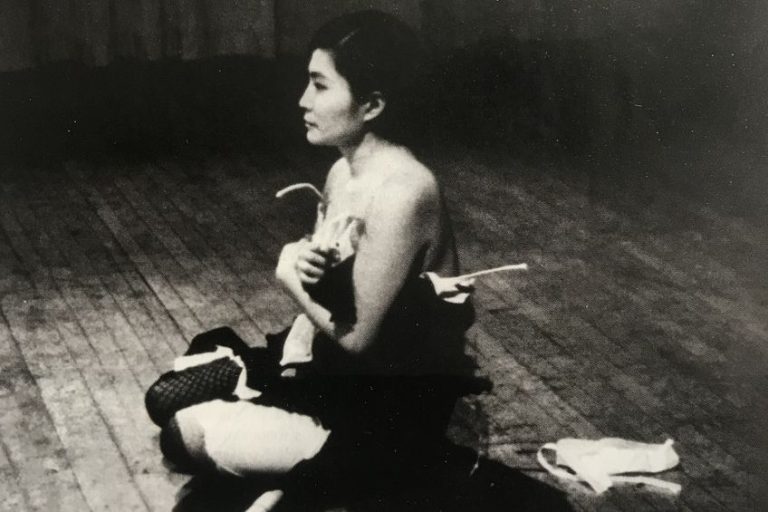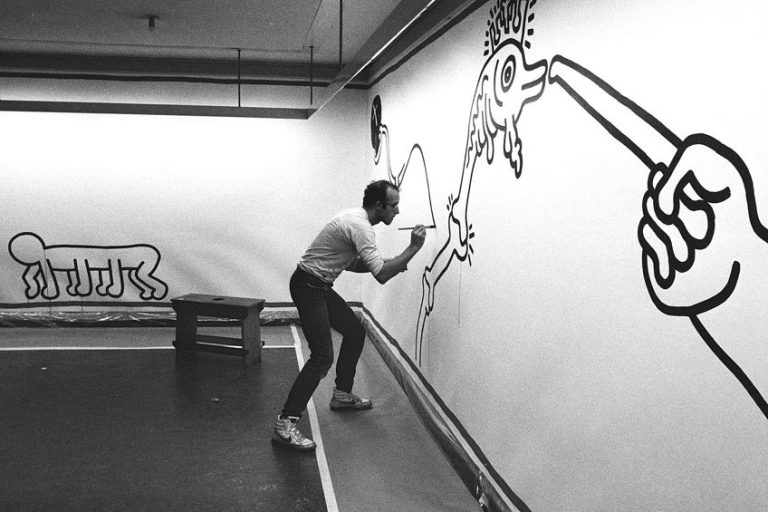Sol LeWitt – The Life and Art of American Artist Sol LeWitt
Sol LeWitt, an iconic American artist, remains an indelible figure in the realm of contemporary art. Revered for his profound contributions to conceptual art and minimalism, LeWitt’s artistic vision transcends traditional boundaries, challenging the very essence of art itself. The Sol LeWitt Foundation stands as a testament to his enduring legacy, preserving and promoting his groundbreaking ideas. This article delves into the life and works of Sol LeWitt, shedding light on his innovative approach and the profound impact he made on the art world.
Artist Abstract of an American Artist: Sol LeWitt
| Date of Birth | September 9, 1928 |
| Date of Death | April 8, 2007 |
| Place of Birth | Hartford, Connecticut, United States |
| Nationality | American |
| Styles | Contemporary art, Conceptual art, Minimalism, and Modern art |
Sol LeWitt, born on September 9, 1928, in Hartford, Connecticut, emerged as a pioneering force in the world of contemporary art. From his formative years, LeWitt displayed a keen interest in art, drawing inspiration from the works of European masters and the geometric precision of industrial design. After studying fine art at Syracuse University, he enlisted in the United States Army during the Korean War, where he was stationed in Japan. This experience exposed him to Japanese art and culture, which would later influence his artistic philosophy.

Early Career: The Graphic Designer in New York City
In the early years of his career, Sol LeWitt worked as a graphic designer in New York City, honing his skills in visual communication and exploring the possibilities of visual abstraction. However, it was during the 1960s that LeWitt began to gain recognition for his groundbreaking contributions to conceptual art and minimalism.
These two influential movements would redefine the trajectory of contemporary art.
Rising to Fame: Challenging Conventions
LeWitt’s artistic approach emphasized ideas over traditional craftsmanship, advocating for the primacy of concept in the creation of art. He believed that the execution of an artwork was secondary, even suggesting that his ideas could be realized by others, as he famously stated, “The idea becomes a machine that makes the art.” This revolutionary perspective challenged conventional notions of authorship and pushed the boundaries of artistic practice.

Through his renowned wall drawings, LeWitt captured the essence of his conceptual vision. These large-scale works, executed by teams of assistants following his instructions, blurred the distinction between creator and executor, emphasizing the importance of the idea itself. By embracing this collaborative and process-oriented approach, LeWitt broadened the possibilities of artistic production and questioned the traditional role of the artist as a solitary genius.
Legacy and the Sol LeWitt Foundation
His rise to fame saw him exhibit extensively in prestigious galleries and museums worldwide, including the Museum of Modern Art in New York and the Centre Pompidou in Paris. The Sol LeWitt Foundation, established in 1980, continues to uphold his artistic legacy, preserving his ideas and supporting the realization of his wall drawings and other site-specific installations.
Contemporary Art: Sol LeWitt as a Pioneer of Minimalism
Contemporary art is a dynamic and ever-evolving field that encapsulates the artistic expressions of our time, reflecting the diverse perspectives, issues, and complexities of the modern world. It encompasses a broad range of styles, mediums, and conceptual approaches, constantly pushing boundaries and challenging traditional notions of art. One influential movement within contemporary art is minimalism, and at the forefront of this movement stands Sol LeWitt—a visionary artist who not only embodies the spirit of contemporaneity but also exemplifies the essence of minimalism.
Minimalism emerged in the mid-20th century as a radical departure from conventional artistic practices. It sought to distill art to its core elements, rejecting extraneous adornments and focusing on simplicity, precision, and the reduction of form.
Minimalist artworks often feature clean lines, geometric shapes, and a restrained color palette, creating a visual language that is stripped down and devoid of superfluous details. Beyond his artistic contributions, Sol LeWitt’s influence on contemporary art is far-reaching. He not only shaped the aesthetic discourse of minimalism but also challenged the traditional hierarchy of artistic production. By focusing on ideas rather than physical craftsmanship, LeWitt democratized art, highlighting the conceptual aspect as the true essence of creative expression. His legacy continues through the Sol LeWitt Foundation, which preserves his ideas and supports the realization of his wall drawings and other site-specific installations.
Sol LeWitt Art: Exploring the Characteristics of Sol LeWitt’s Sculptures
LeWitt’s sculptures possess distinct technical elements that make them both visually intriguing and conceptually profound. By exploring the technical aspects of his sculptures, we gain insight into the artist’s innovative approach and his enduring legacy within the art world.
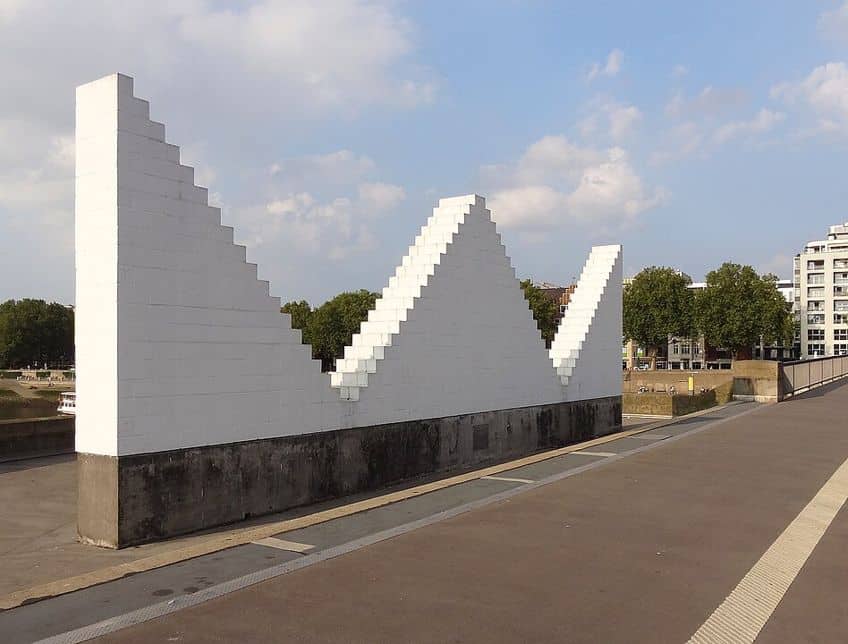
The Technicalities of Sol LeWitt’s Art
One of the defining features of Sol LeWitt’s sculptures is their modular and geometric nature. Employing materials such as wood, metal, and fiberglass, LeWitt created sculptures that were composed of repetitive elements, often geometric shapes like cubes, rectangles, and pyramids. These elements were meticulously arranged and stacked, adhering to predetermined sets of rules or instructions conceived by the artist. LeWitt’s sculptures were often executed by teams of assistants under his supervision, adhering to his precise instructions.
This collaborative process, reminiscent of the execution of his wall drawings, allowed for the realization of the sculptures while maintaining the artist’s conceptual vision.
The modular nature of his sculptures also enabled various configurations and spatial arrangements, ensuring a dynamic and adaptable artistic experience. The use of primary colors was another recurring characteristic in LeWitt’s sculptures. His bold and vibrant color choices added visual impact and heightened the overall presence of the artwork. By employing primary colors, LeWitt emphasized the purity and essential qualities of the sculptural forms, further aligning with the minimalist principles that shaped his artistic practice.
The First Reception of Sol LeWitt’s Sculptures
When Sol LeWitt’s sculptures first emerged in the art world during the 1960s and 1970s, they were met with both fascination and challenge. At the time, traditional notions of sculpture predominantly involved figurative or representational forms, making LeWitt’s abstract and geometric creations a radical departure from the established norms.
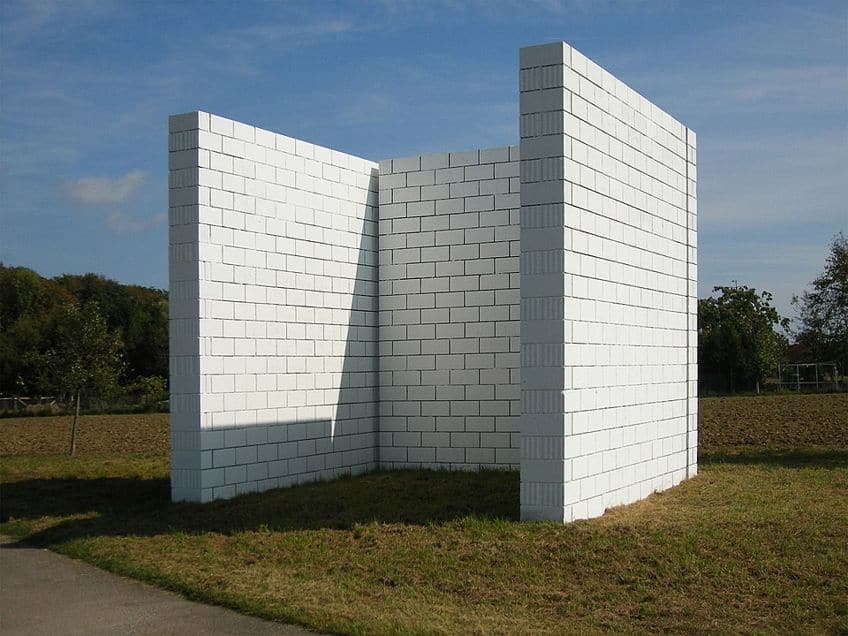
The reception of LeWitt’s sculptures varied among critics and audiences. Some viewers were captivated by the visual allure and precise craftsmanship of his sculptures, appreciating the meticulous arrangement of modular elements and the interplay of colors. Others found it difficult to reconcile with the abstract nature of the sculptures, grappling with the absence of recognizable subjects or narratives. However, despite initial skepticism, LeWitt’s sculptures garnered significant attention and acclaim within the art world. They were exhibited in prestigious galleries and museums, and his innovative approach to sculptural form sparked a dialogue around the nature of sculpture and the evolving definition of artistic expression.
The Impact of Sol LeWitt’s Sculptures on the Evolution of the Art World
Sol LeWitt’s sculptures have had a profound impact on the evolution of the art world, pushing the boundaries of traditional sculptural practice and expanding the conceptual possibilities within the medium. By embracing the modular and geometric elements, LeWitt challenged the notion of a singular, static sculpture. His sculptures encouraged an active engagement from viewers, who were invited to explore the configurations, interact with the modular components, and reimagine the spatial relationships.
LeWitt’s sculptures also contributed to the democratization of art. With his emphasis on instructions and modular components, LeWitt allowed for the realization of his sculptures by others, blurring the lines between artist and fabricator.
This departure from the traditional concept of the artist as an individual genius paved the way for a collaborative and process-oriented approach to contemporary sculpture. Moreover, Sol LeWitt’s sculptures, along with his broader artistic practice, played a crucial role in expanding the realm of conceptual art. By prioritizing ideas over traditional craftsmanship and embracing the conceptual framework as the driving force, LeWitt challenged established hierarchies and opened up new avenues for artistic exploration.
Visual and Conceptual Analysis of Sol LeWitt’s Incomplete Open Cubes (1974)
| Name | Incomplete Open Cubes |
| Date | 1974 |
| Dimensions (cm) | Each cube: 6 x 6 x 6, and base: 73.66 x 177.8 x 165.1 |
| Medium | Paint and wood |
| Style | Minimalism |
| Period | Contemporary Art |
| Location | Wadsworth Atheneum Museum of Art, Hartford, United States |
Sol LeWitt’s Incomplete Open Cubes is a significant sculpture that exemplifies his mastery of geometric forms and conceptual exploration. Created in 1974, this iconic artwork consists of a three-dimensional framework that is both visually captivating and intellectually stimulating. By analyzing its visual characteristics and conceptual underpinnings, we can delve into the profound nature of LeWitt’s artistic practice.
Visually, Incomplete Open Cubes is composed of 122 painted wooden structures and displayed on a white wooden base. The sculpture is constructed using modular elements but arranged in a way it looks like the larger has been deconstructed. The open structure of the cubes introduces a compelling play of light and shadow, further enhancing the visual complexity of the piece.
The use of only white, a signature element of LeWitt’s work, adds simplicity and visual impact to the sculpture. The color choice also aligns with LeWitt’s minimalist sensibilities, emphasizing the essential qualities of the sculptural elements and rejecting unnecessary embellishments.
Conceptually, Incomplete Open Cubes reflects LeWitt’s exploration of conceptual ideas and his interest in the viewer’s engagement with the artwork. The sculpture invites viewers to mentally complete the missing parts, stimulating their imagination and active participation in the artistic experience. The open structure challenges traditional notions of completeness and closure, questioning the boundaries of form and spatial relationships.
The modular and interlocking nature of the sculpture that is kept undone, embodies LeWitt’s conceptual emphasis on systems and rules. The repetitive geometric forms and their arrangement alludes to a predetermined set of instructions, reflecting his interest in the systematic approach to artistic creation.
This conceptual framework also emphasizes the idea as the primary artistic statement, transcending the physical execution of the sculpture and elevating the intellectual engagement with the work.
Moreover, Incomplete Open Cubes exemplifies LeWitt’s exploration of the relationship between art and its surrounding space. The sculpture, with its open structure and negative spaces, creates a dialogue with the environment, blurring the boundaries between the artwork and the surrounding context. The viewer is encouraged to consider the spatial relationships and the interaction between the sculpture and its surrounding architecture, further enriching the conceptual depth of the piece.
Unveiling the Characteristics of Sol LeWitt’s Wall Drawings
Sol LeWitt’s monumental installations, called wall drawings, are distinguished by their technical elements, which contribute to their visual impact and conceptual depth. By examining the technical aspects of LeWitt’s wall drawings, we gain insight into the meticulous craftsmanship and innovative techniques behind these iconic works.
LeWitt’s wall drawings are characterized by their large-scale nature, often spanning entire walls or gallery spaces. The artist would conceive a conceptual framework and provide precise instructions or a set of rules for the execution of the drawing. These instructions were not limited to a specific medium or material, allowing for versatility in the realization of the artwork. LeWitt’s wall drawings have been executed in various mediums, including graphite, colored pencils, paint, and even digital projections, further expanding the possibilities of the form.
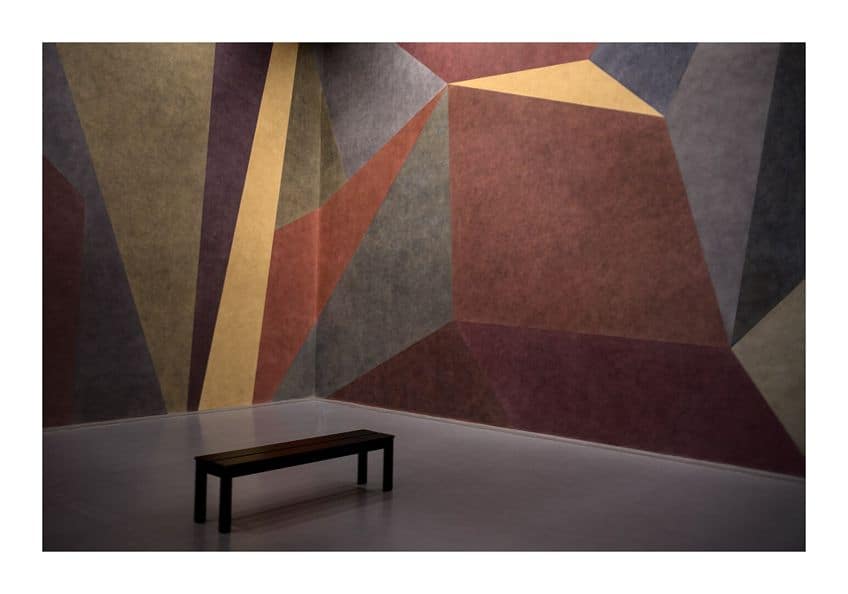
The modular and geometric elements, recurring themes in LeWitt’s artistic practice, are also evident in his wall drawings. Through the use of straight lines, grids, and geometric shapes, LeWitt creates visually captivating compositions that interact with the architectural space they inhabit. The precision of the lines and the meticulous execution demonstrate the artist’s attention to detail and his commitment to achieving visual harmony.
Conceptual and Visual Analysis of One of Sol LeWitt’s Famous Wall Drawings: Wall Drawing #118 (1971)
| Name | Wall Drawing #118 |
| Date | 1971 |
| Dimensions (cm) | Various sizes |
| Medium | Various mediums |
| Style | Minimalism |
| Period | Contemporary Art |
| Location | N/A |
One notable example of Sol LeWitt’s wall drawings is Wall Drawing #118 (1971), which exemplifies the artist’s conceptual rigor and the visual impact of his work. In this particular wall drawing, a series of vertical lines intersect with diagonal lines, creating a dynamic composition that engages the viewer and transforms the architectural space.
Visually, Wall Drawing #118 is characterized by its precise lines and geometric arrangement.
The intersection of vertical and diagonal lines creates a sense of movement and visual tension. The contrast between the white lines and the wall’s surface adds depth and dimension to the composition. The repetitive nature of the lines echoes the systematic approach that LeWitt often employed, underscoring his interest in the conceptual aspects of art-making.
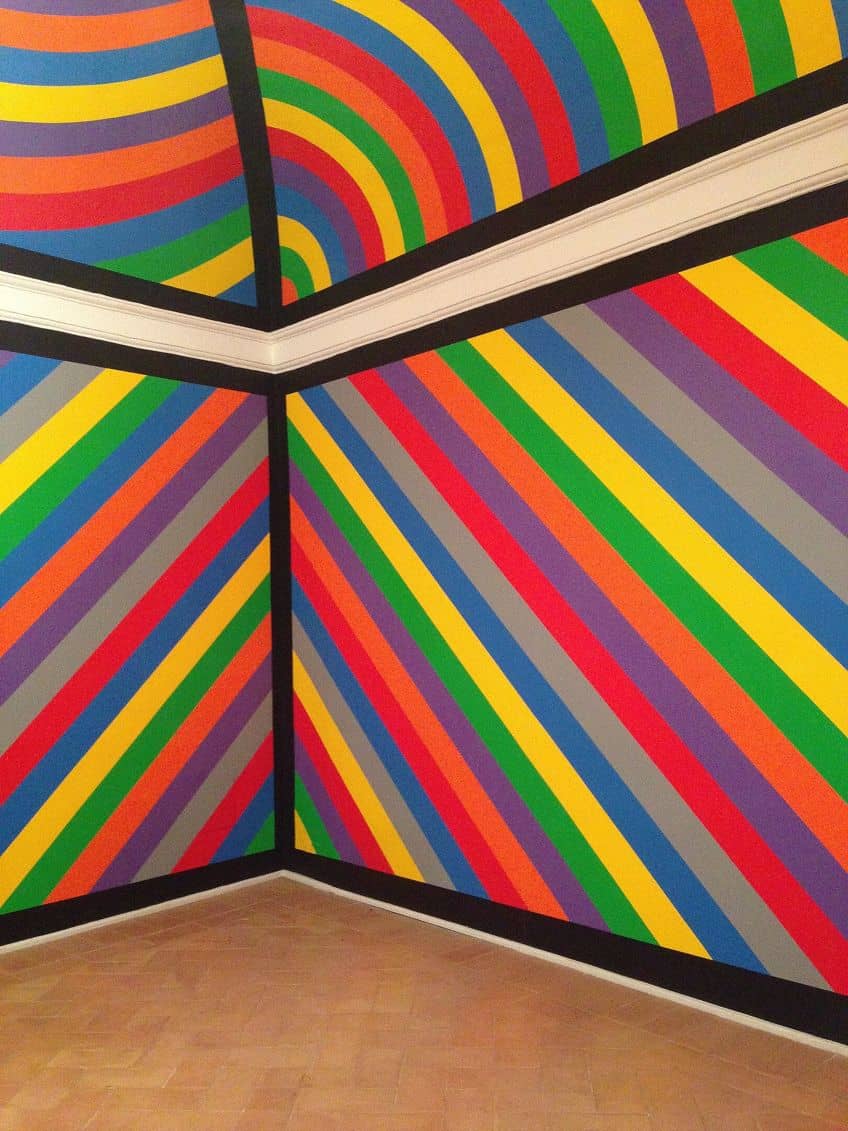
The open-ended nature of LeWitt’s wall drawings allows for different interpretations and executions. Each installation of Wall Drawing #118 may vary slightly depending on the dimensions of the space and the interpretation by the installation team. This element of variability and adaptability adds an intriguing layer to the artwork, encouraging dialogue and engagement with the viewer. This means that the drawing has been executed multiple times, in various sizes and mediums.
In conclusion, Sol LeWitt’s art has left an indelible mark on the art world, solidifying his position as a pioneering American artist associated with conceptual art and minimalism. His groundbreaking contributions and innovative approach continue to influence contemporary artists and shape the evolution of artistic practice. Through his conceptual investigations, precise execution, and emphasis on ideas over materiality, LeWitt challenged traditional notions of art and expanded the boundaries of artistic expression. Today, his artistic legacy lives on through the Sol Lewitt Foundation, preserving and promoting his vision while inspiring future generations to explore the intersection of concept and form. Sol LeWitt’s enduring impact on the art world solidifies his status as a visionary artist whose work continues to captivate and provoke contemplation.
Frequently Asked Questions
Why Was Sol LeWitt So Important?
Sol LeWitt was a vital figure in the art world due to his significant contributions to conceptual art and minimalism. He played a pivotal role in challenging traditional notions of artistic practice by prioritizing ideas and concepts over materiality. LeWitt’s emphasis on instructions and systems allowed for the democratization of art, blurring the lines between artist and fabricator. His work sparked a dialogue on the nature of art, expanding the conceptual possibilities within the medium. With his innovative approach, meticulous craftsmanship, and enduring impact, Sol LeWitt remains an important artist whose influence continues to shape and inspire contemporary artistic expression.
What Is an Interesting Fact About Sol LeWitt?
An interesting fact about Sol LeWitt is that he once worked as a graphic designer for renowned architect I.M. Pei. Before gaining recognition as a prominent artist, LeWitt honed his skills in the field of graphic design, creating graphics and illustrations for architectural projects. This early experience likely influenced his meticulous attention to detail and the precise execution seen in his later artworks. LeWitt’s multidisciplinary background highlights his versatility and the diverse influences that shaped his artistic practice.
How Did Sol LeWitt Make His Art?
Sol LeWitt employed a distinctive artistic process in creating his artworks. He began by conceptualizing his ideas and formulating a set of instructions or rules to guide the execution of the artwork. LeWitt’s emphasis was on the concept rather than the physical act of making art. For his wall drawings, he would provide these instructions to a team of assistants who would meticulously follow them to bring the artwork to life on the designated wall. Similarly, for his sculptures, LeWitt would outline specific guidelines for their construction, allowing for their execution by others. This collaborative and process-oriented approach allowed LeWitt to transcend the limitations of individual authorship and explore the fundamental essence of art through systematic execution and conceptual frameworks.
Nicolene Burger is a South African multi-media artist, working primarily in oil paint and performance art. She received her BA (Visual Arts) from Stellenbosch University in 2017. In 2018, Burger showed in Masan, South Korea as part of the Rhizome Artist Residency. She was selected to take part in the 2019 ICA Live Art Workshop, receiving training from art experts all around the world. In 2019 Burger opened her first solo exhibition of paintings titled, Painted Mantras, at GUS Gallery and facilitated a group collaboration project titled, Take Flight, selected to be part of Infecting the City Live Art Festival. At the moment, Nicolene is completing a practice-based master’s degree in Theatre and Performance at the University of Cape Town.
In 2020, Nicolene created a series of ZOOM performances with Lumkile Mzayiya called, Evoked?. These performances led her to create exclusive performances from her home in 2021 to accommodate the mid-pandemic audience. She also started focusing more on the sustainability of creative practices in the last 3 years and now offers creative coaching sessions to artists of all kinds. By sharing what she has learned from a 10-year practice, Burger hopes to relay more directly the sense of vulnerability with which she makes art and the core belief to her practice: Art is an immensely important and powerful bridge of communication that can offer understanding, healing and connection.
Nicolene writes our blog posts on art history with an emphasis on renowned artists and contemporary art. She also writes in the field of art industry. Her extensive artistic background and her studies in Fine and Studio Arts contribute to her expertise in the field.
Learn more about Nicolene Burger and the Art in Context Team.
Cite this Article
Nicolene, Burger, “Sol LeWitt – The Life and Art of American Artist Sol LeWitt.” Art in Context. July 10, 2023. URL: https://artincontext.org/sol-lewitt/
Burger, N. (2023, 10 July). Sol LeWitt – The Life and Art of American Artist Sol LeWitt. Art in Context. https://artincontext.org/sol-lewitt/
Burger, Nicolene. “Sol LeWitt – The Life and Art of American Artist Sol LeWitt.” Art in Context, July 10, 2023. https://artincontext.org/sol-lewitt/.







